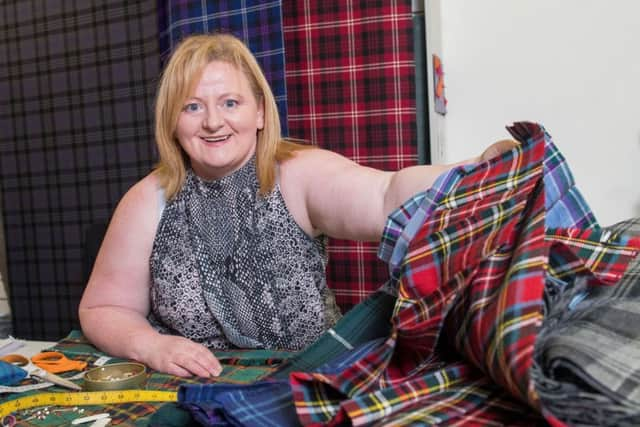Edinburgh weaver makes her 20,000 kilt


Elaine Skedd created the milestone kilt on her 40th anniversary at the Tartan Weaving Mill on Edinburgh’s Royal Mile yesterday, after first joining the company in 1977.
Mrs Skedd, 54, only began her apprenticeship as a 15-year-old because she was too young to join her brothers in the army.
Advertisement
Hide AdAdvertisement
Hide AdHowever, after being rejected again at 17 due to women not being allowed to join the Royal Marines at the time, Mrs Skedd became “addicted” to weaving, at one stage hand-sewing around 670 kilts a year.


Mrs Skedd said: “They said I couldn’t join the army until I was 17, so I waited and just picked up weaving as a sideline, only because it paid more than hairdressing. But when I went back to apply a few years later, they told me there was no such thing as a female Marine.
“It hurt at the time, but I went back to kiltmaking and I discovered a love for it.
“There was a long period when I couldn’t sleep and was sewing three kilts a day. I think between around 1987 and 1999. I went through what I call my ‘powerhouse phase’ of hand-sewing kilts, hitting a peak of 14 kilts every week.”


Mrs Skedd said each kilt usually takes around a day to make, although at her fastest she was making three per day.
Her work has gained international recognition, with some kilts being exported as far afield as Africa and one specially created tartan being woven for Outlander star Graham MacTavish.
However, she admitted there is one design that always gets special treatment.
Advertisement
Hide AdAdvertisement
Hide Ad“Both my brothers were in the Black Watch, so whenever the Black Watch tartan comes up, I’ll give that one special attention,” she said. “I always make sure I take extra care over it because it means a lot to me and my family.”
Mrs Skedd also revealed the lengths she has gone to in order to keep up her prolific record – even persuading court staff to allow her to sew in the jurors’ box.
She said: “About ten years ago, I discovered I had carpal tunnel syndrome and needed surgery on my hands. Even after that though, I kept sewing. I ended up taking the bandages off and finding a way to do it anyway.
“It’s just been constant, I’ve sewn everywhere – on holiday, at my children’s school shows. I was once on jury duty and the court let me sew a kilt in the box, although they stopped short of letting me take my scissors in with me.
“I think I was probably addicted for a while. Some would say I still am.”
